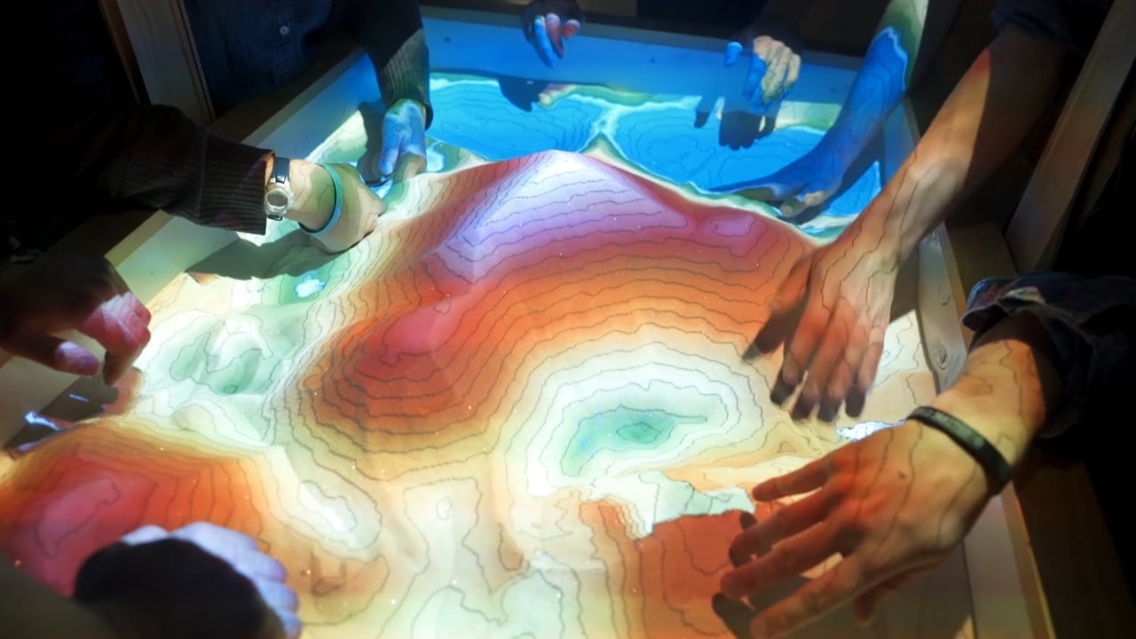Video: Augmented Reality Sandbox
MIDDLEBURY, Vt. – It feels like an instant throwback to childhood—burying your hands in the sand, building mountains, rivers, and lakes. But while the sandbox in Middlebury’s geology lab offers the same tactile joy as a day at the beach, students are learning about topography, landforms, and geologic process with the help of Microsoft Xbox components.
The augmented-reality sandbox allows students to create and change topography in real time. As they move the sand around into different formations, the Xbox Kinect radar scans the top surface of the sand, then feeds the data to a computer, which in turn projects a topographic map onto the sand. Through colors and lines, the map shows elevations. So, for example, if you build a “mountain” the peak will appear red while the lower elevations show as cooler colors. Bulldoze the mountain and the colors immediately change to reflect the new elevations.
“Technology like this is very engaging,” said Assistant Professor of Geology Kristina Walowski. “It’s colorful, hands-on. So, even as the students are learning about topography and maps, which can be really dry, it’s a memorable experience, and it’s really fun!”
Walowski had seen augmented reality sandboxes at other universities and museums and wondered if it were something she could bring to Middlebury. She asked one of her students, Sam Kaelin ’19.5, to research the components and assembly process. With a grant from Middlebury’s Fund for Innovation, Kaelin constructed the sandbox and added the technology. It took a little fine tuning to get all the components working in harmony, said Kaelin, but the results have been wonderful.
“When you see something in three dimensions, especially something you can sink your hands into, it really opens up new avenues,” said Kaelin.
Walowski says the sandbox has been a helpful tool for discussion sections and labs. Her fellow geologist, Professor Pat Manley, has used the sandbox to discuss bathymetric maps of the ocean floor. The students have also used it as an outreach tool with local elementary schoolers who are studying earth sciences.
The sandbox has a feature that allows users to make it “rain” by holding a hand out flat at a specific height above the sand. Making it rain can help students understand how watersheds work, says Walowski, as the virtual water flows down the sides of the sand mountains through various streams and rivers on its way to the lakes below.
Walowski says students are constantly asking how it might be used for researching landscapes and landscape evolution. “Right now we’re not actively using the sandbox for research, but with the creative imaginations of the students, we’re really hoping to explore the research potential of this tool in the future,” said Walowski.
Middlebury’s augmented-reality sandbox will make its public debut at the 2018 Spring Symposium at McCardell Bicentennial Hall on Friday, April 20.


